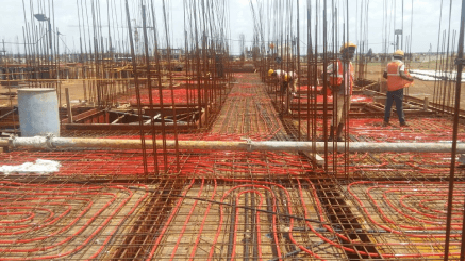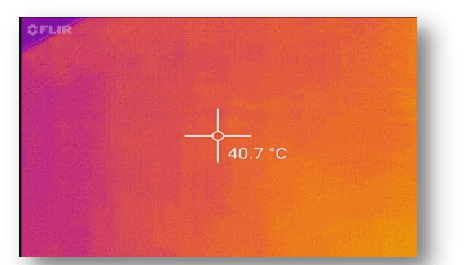Educational Institutions
Educational buildings such as libraries and hostels have large areas and require large energies to cool their spaces. This, in turn, translates to a large amount of operating costs for cooling such spaces. The conventional systems don’t address the problem of heat re-radiated from the structure of the building which is accumulated in the building mass. Re-radiated heat from the structure results in an increase in the heat load of the space.
Structure cooling with a two-stage cooling tower is a solution for these kinds of spaces where the structure of the building is cooled.
By using structure cooling with two-stage cooling tower
1. We are reducing the heat load of the space by cooling the structure of the building – the largest source of indoor heat.
2. The vibration and noise level in the space is reduced.
3. The aesthetics of the space is improved due to the absence of ducts system.
4. Comfort cooling can be achieved through a normal ceiling fan operation.
5. The power consumption of the cooling tower is only 0.05 kW/tonne while conventional system consumes around 1-1.2 kW/tonne.
6. Life of the system is more than 50 years as PERT pipes are used.
7. TThe maintenance of slab cooling systems is simple and cost-effective as minimal resources are used.
Structure Cooling is done during the construction of the building where PERT pipes are embedded in the ceiling of the building.

Chilled water at around 20-24 degree Celsius is circulated through the two-stage cooling tower. The two-stage cooling tower is capable of providing the chilled water at the wet-bulb temperature of the ambient. This chilled water takes away the heat from the thermal mass of the building, thereby reducing the heat load of the building.

The above picture shows the thermographic image of the concrete ceiling at 8 PM when ambient is 25 degree Celsius. This accumulated heat is re-radiated into the building space increasing the heat load of the space. The conventional HVAC system doesn’t cool the building, consuming large amounts of energy to flush out the re-radiated heat from the structure, whereas the structure cooling cools the building. Structure cooling can provide 40-45 W/sq.mt of area installed.
Structure cooling with the two-stage cooling tower is the way to go forward for low-energy consumption comfort cooling, specially in places where conventional HVAC systems can’t be implemented such as Govt offices and primary health centres. By using structure cooling, we offset a significant amount of GHG emissions by consuming only 0.05 kW/tonne of cooling.
